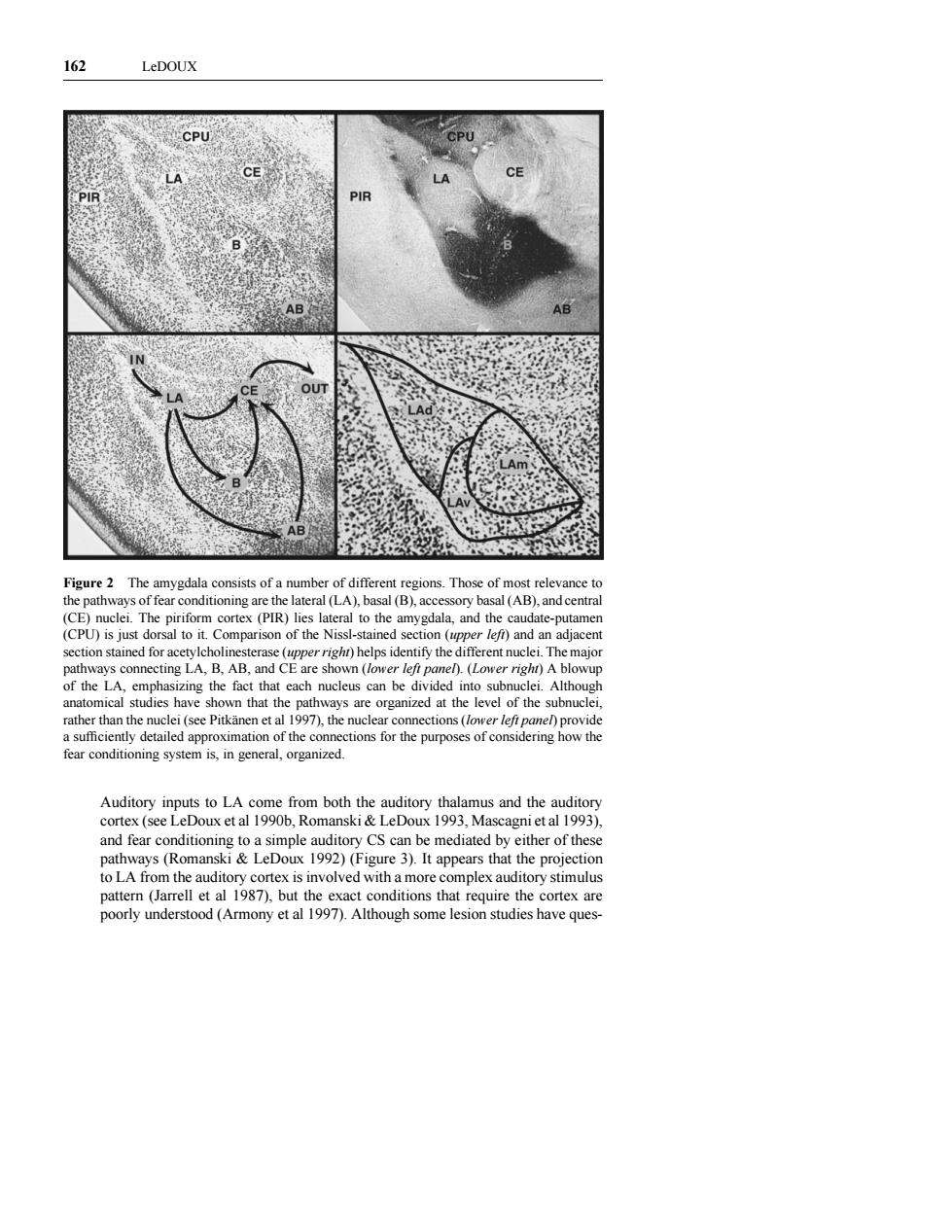正在加载图片...

162 LeDOUX Figure The amygdala consists fr regions.Those of mo relevance to nuclei.The piriform corex (PIR)lies lateral to the amy dala and the I to it, mparison of the N I-stained s on oper lefr)and athwa con mel).(Lower right)A blowup of the ical studi ather than the ing system is in general organized and see ears that the et oorly understo162 LeDOUX Figure 2 The amygdala consists of a number of different regions. Those of most relevance to the pathways of fear conditioning are the lateral (LA), basal (B), accessory basal (AB), and central (CE) nuclei. The piriform cortex (PIR) lies lateral to the amygdala, and the caudate-putamen (CPU) is just dorsal to it. Comparison of the Nissl-stained section (upper left) and an adjacent section stained for acetylcholinesterase (upper right) helps identify the different nuclei. The major pathways connecting LA, B, AB, and CE are shown (lower left panel). (Lower right) A blowup of the LA, emphasizing the fact that each nucleus can be divided into subnuclei. Although anatomical studies have shown that the pathways are organized at the level of the subnuclei, rather than the nuclei (see Pitka¨nen et al 1997), the nuclear connections (lower left panel) provide a sufficiently detailed approximation of the connections for the purposes of considering how the fear conditioning system is, in general, organized. Auditory inputs to LA come from both the auditory thalamus and the auditory cortex (see LeDoux et al 1990b, Romanski & LeDoux 1993, Mascagni et al 1993), and fear conditioning to a simple auditory CS can be mediated by either of these pathways (Romanski & LeDoux 1992) (Figure 3). It appears that the projection to LA from the auditory cortex is involved with a more complex auditory stimulus pattern (Jarrell et al 1987), but the exact conditions that require the cortex are poorly understood (Armony et al 1997). Although some lesion studies have ques-